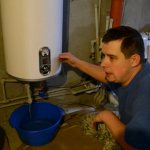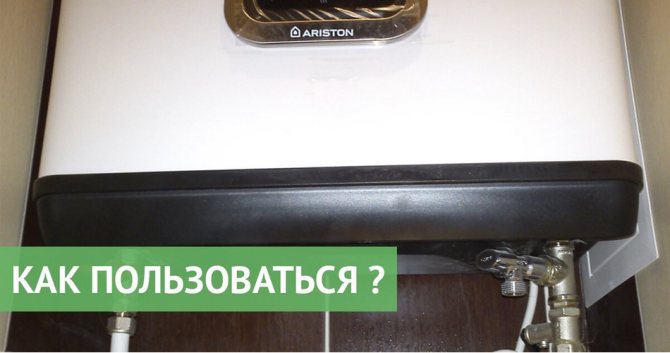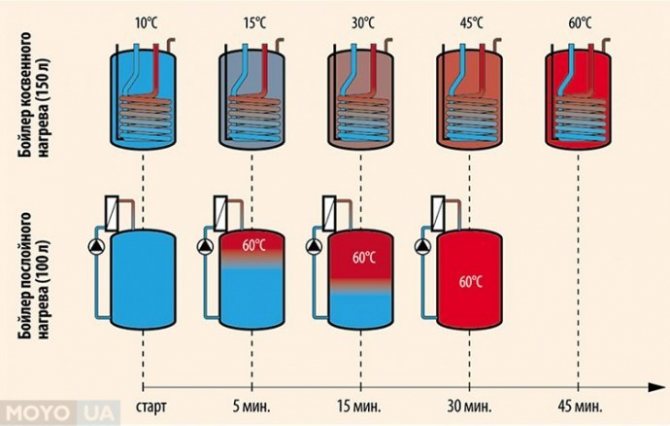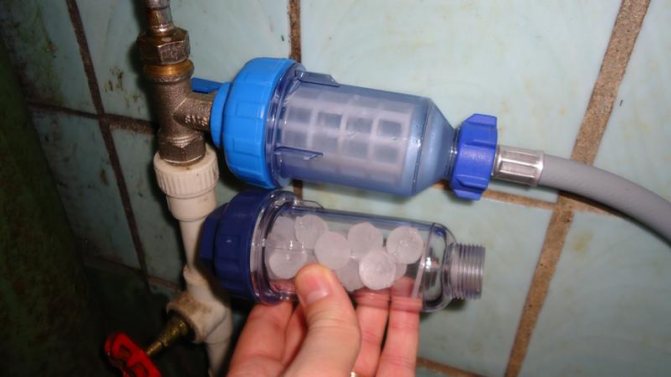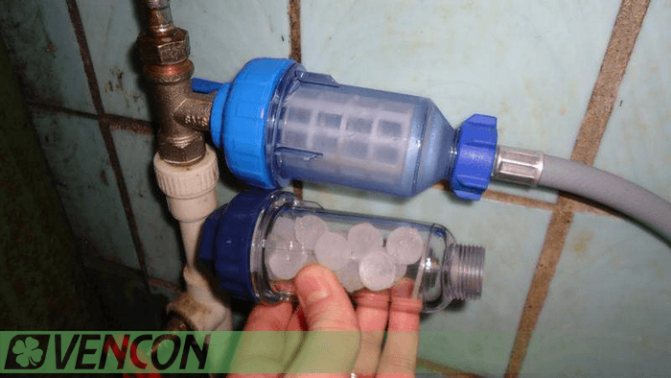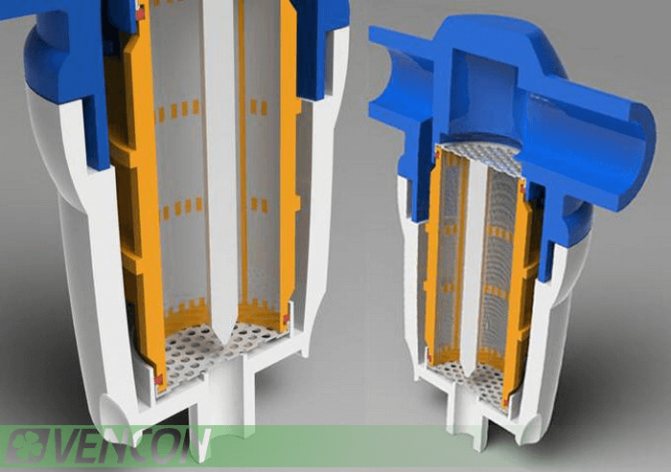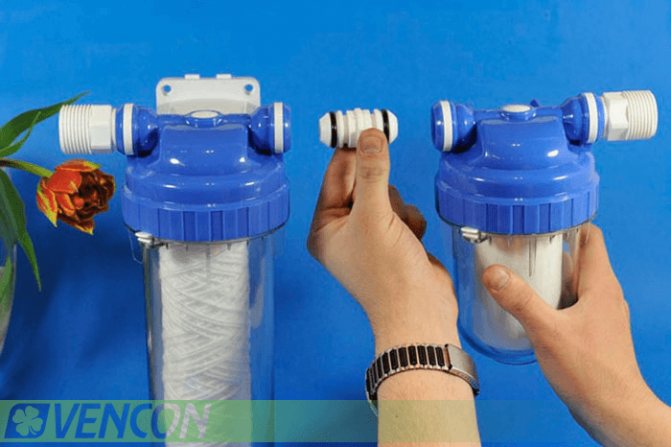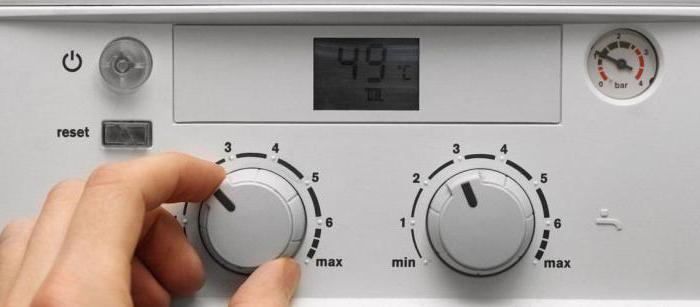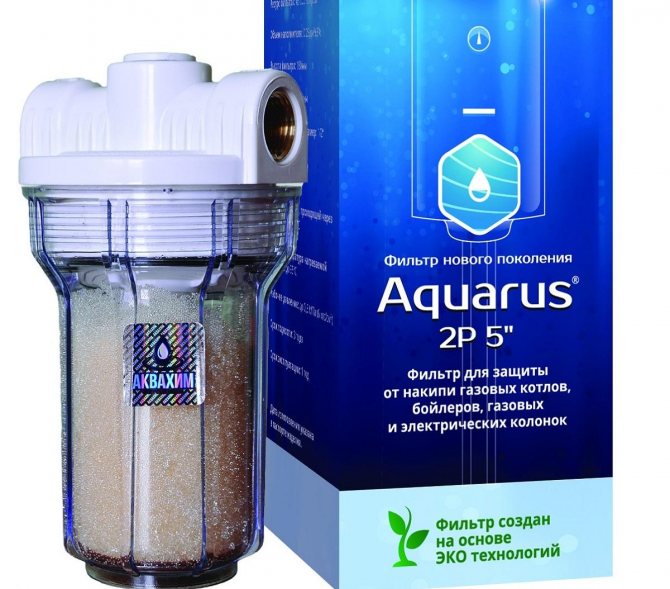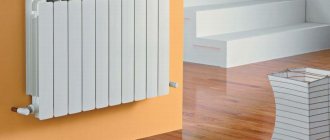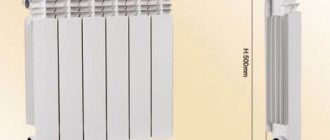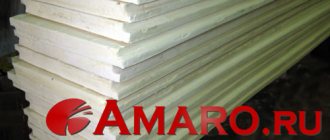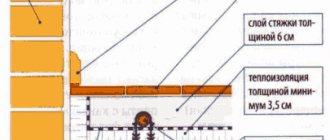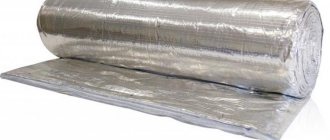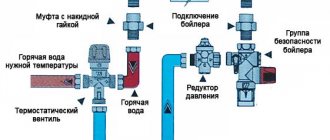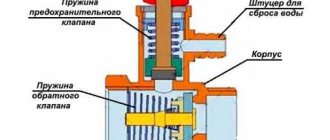In many apartments and private houses, boilers are installed to provide hot water. The service life of such devices largely depends on tap water - if it is too hard, then scale will form on the walls of the internal tank and heating element. This can be avoided by periodically carrying out preventive maintenance, which consists in cleaning the inner surface of the boiler. Experienced specialists know how to quickly and competently drain the water from the device. But a person who is faced with a similar problem for the first time needs to first understand all the nuances of the process. How to drain water from a boiler will be discussed in this article.
How to drain water from a boiler
When should the water be drained?
When, in addition to cleaning the inner surface of the tank and heating element, is it necessary to drain the water from the boiler? This question should be of interest primarily to those who use the water heater irregularly. In country houses, where the owners are only in the summer on weekends, the water must be drained in cases where the temperature can drop to 5 degrees Celsius during the idle time of the boiler. There is a possibility of the coolant freezing at this temperature and, as a consequence, rupture of the tank in the boiler.
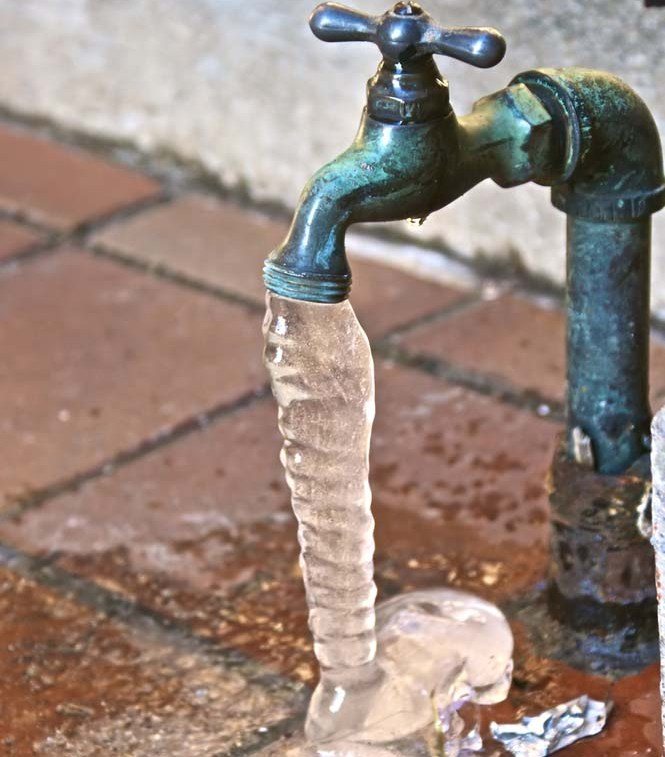
It is impossible for the water temperature in the boiler to fall below +5 degrees
Note! If the temperature does not drop below +5 degrees, then it is better not to touch the device at all, since manufacturers categorically do not recommend leaving water heaters without liquid for a long time. Otherwise, a number of processes may occur that worsen the condition of the storage tank.
Do not be afraid that the water in the tank will deteriorate. After a long "stagnation", you just need to pass it through the tap, and the next "batch" can already be used. By the way, a magnesium rod works effectively even when completely submerged in water, and it is excellent at preventing the appearance of rust.
After stagnation, the water must be passed through the tap.
The overwhelming majority of manufacturers also do not recommend draining water often, because a tank without liquid corrodes much faster. Experienced people on this occasion said: a thing created to be in water must be in it.


Boiler operation scheme
Often, the drainage of water is motivated by an unpleasant odor that appears inside the device if the water has not been drained for a long time. In this case, you can resort to a little trick: if the pipeline water comes with impurities (such as, for example, hydrogen sulfide), then even short-term downtime the boiler should be dehydrated. You can drain water from it every time, and at the first filling, heat it as much as possible.
You may be interested in information on how to clean the boiler
Video - How to get rid of the unpleasant smell of water in the boiler?
Procedure
How to turn on the boiler so that hot water appears? To do this, follow the steps listed below in the following order:
- Open the hot water tap on the mixer and make sure it is not there. Shut off valve.
- Open the tap with a blue circle at the inlet of the water heater, then the tap at the outlet, marked with a red mark. Wait for a while until all the air is released from the system, if there was no water in the boiler. Next comes the process of filling the water heater.
- In the event that the boiler was filled with water, you just need to drain it a little and close the tap with a red circle.
- Before plugging in the boiler, the tank must be completely filled with water.Otherwise, there is a risk of burnout of the tubular heater if the model is not equipped with a protection system.
- In the process of heating water, it is important to control the temperature indicator and the voltage supply to the heating element.
Experts advise setting the operating temperature of the device at 55-60 ° C. This will help to avoid the development of fungi and bacteria in the tank, as well as prevent the formation of scale on the heating element.
How to drain water from a boiler
A boiler is a container that operates at high pressure, therefore, it will not work to drain the water from it by opening the hot water tap and shutting off the cold water supply beforehand. This can be easily guessed if we consider the principle of operation of a storage water heater. If you try to do this, you will only drain the water above the DHW (hot water supply) pipe, and not the fact that completely. It is necessary that air enters the tank - and this is done using the same DHW pipe. Let's see how this procedure will take place.
Perhaps you will be interested in information about if the Ariston water heater has leaked what to do
Step 1. To begin with, the boiler must be de-energized, that is, simply remove the plug from the outlet.
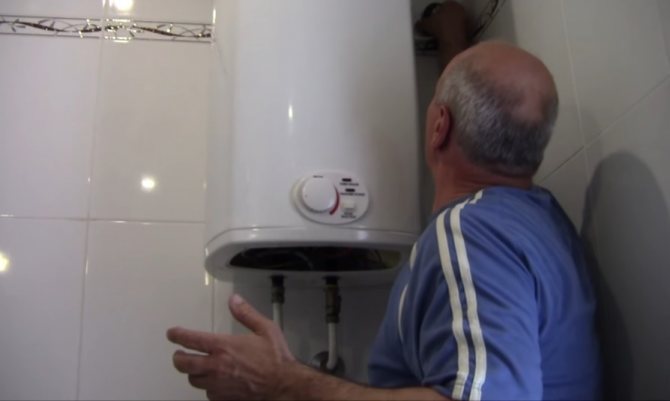

First, the boiler must be de-energized.
Step 2. Next, you need to turn off the cold water supply (turn off the tap).


You also need to shut off the cold water supply.
Step 3. Having previously substituted a basin or any other suitable container, you can start unscrewing the cold water pipes. By the way, the connecting pipes that connect the boiler to the water supply and consumption systems can be metal-plastic, just plastic and made of a flexible hose. Masters advise giving preference to metal-plastic products, since they are more reliable, and at the same time look more attractive.


You can start unscrewing the tubes
Step 4. The hose connection points are untwisted, it is released.
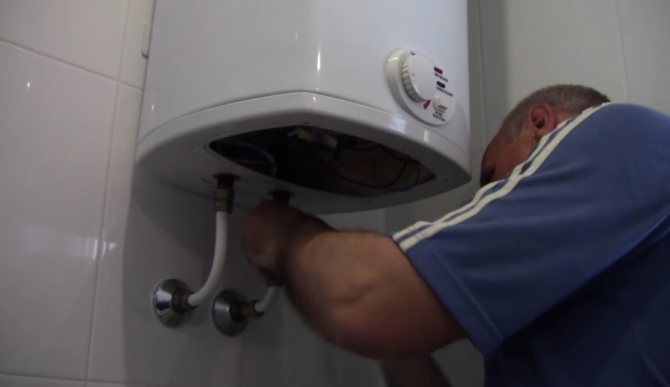

Hose connection points are untwisted
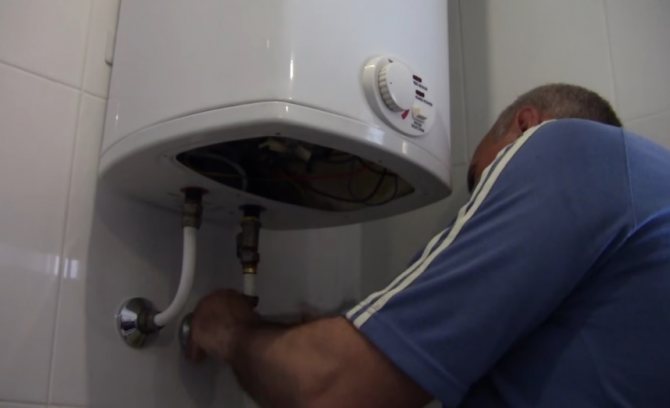

Another photo of the process
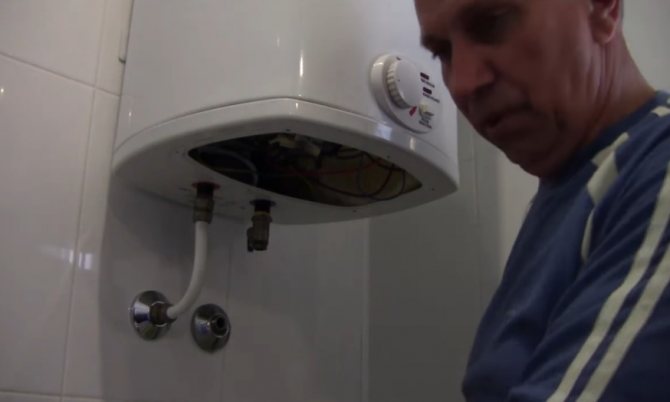

The tube is disconnected
Step 5. The check valve is removed. If in the previous step a little water spilled out, now there will be more of it. This will indicate normal operation of the check valve.


The check valve is unscrewed
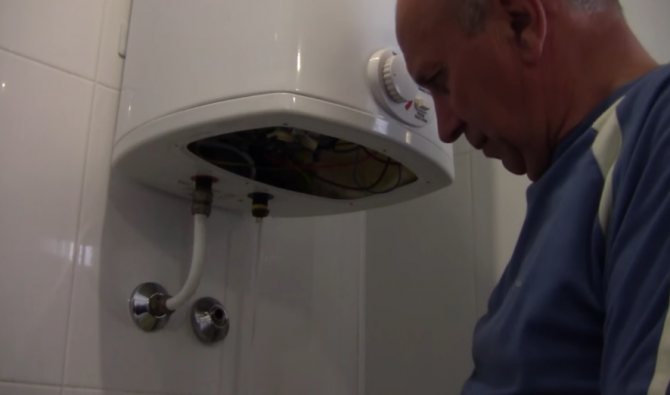

Water flows out of the boiler
Step 6. To proceed further, it is worth dealing with the internal structure of the boiler. So, inside the body there is a tank, which can be all-metal or welded with seams, made of stainless steel or with an enamel coating.
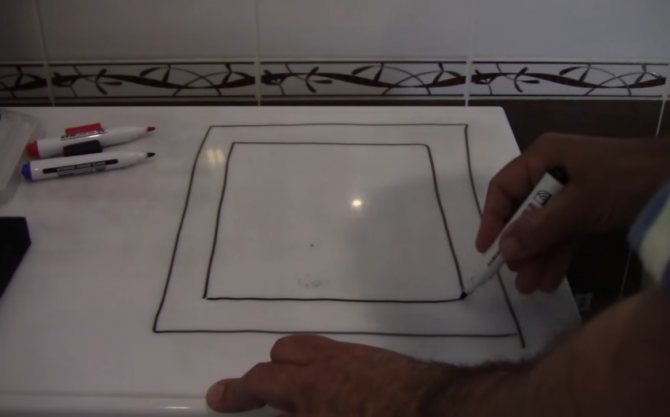

There is a water tank inside the body
Two nozzles go inside the tank: through one of them cold water is supplied to the boiler, and through the other it (already hot) is supplied to an external consumer.
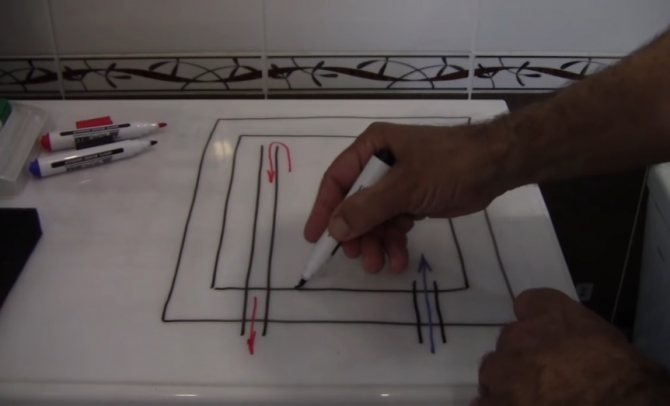

Tubes that go into the tank
Also inside there are heating elements and a magnesium anode (the latter fights scale).


Also inside there is a heating element and a magnesium anode.
In addition, there are two temperature sensor tubes inside. All this goes to the control unit.


Thermal sensor tube in the diagram
We need the air to enter the upper part and, entering there, give the water the opportunity to come out. Therefore, the more air there is, the more water will go away.
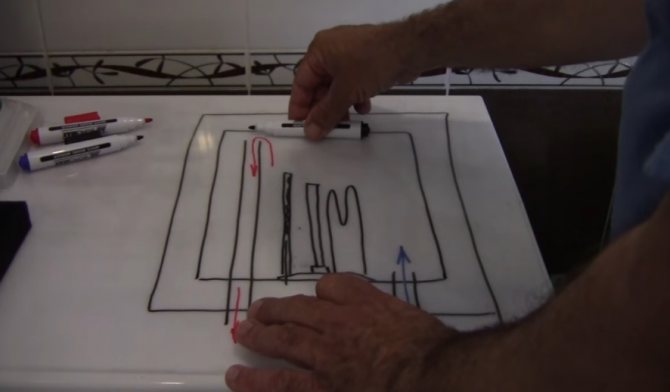

Air must enter the top of the tank
Step 7. The prepared hose is put on the cold water pipe (the basin can be removed). The other end of the hose can be directed into the toilet.


The hose is put on the cold water connection
Step 8. After that, you can unscrew the hot water supply. Thanks to this, air will be supplied directly to the water heater tank.
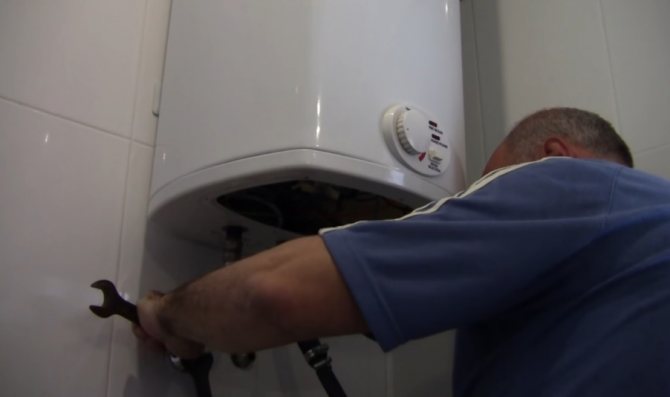

The hot water supply is turned off
Step 9. Air is provided, it is sucked in through the tube and the water is drained into the toilet.
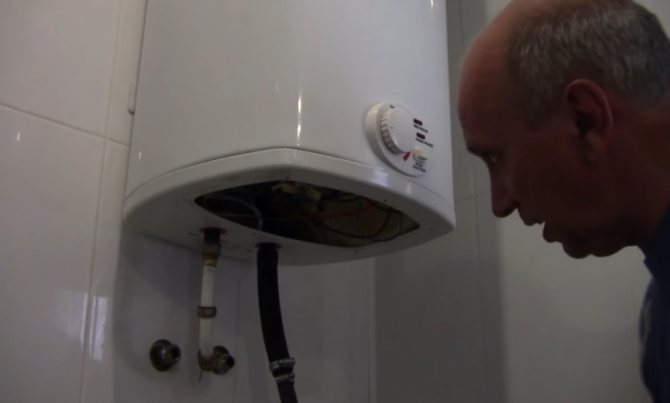

Air is sucked in through the tube, water is drained into the toilet
Note! A small amount of water will still remain in the tank, so later, when you remove the heating element (if necessary), a little of it will fall on your hands. But this is not scary, since the main task - that is, draining the water from the boiler - is practically completed.
Boiler advantages
Hot water in the house is not a luxury at all, but a necessary condition for comfort. However, residents of city apartments often face the fact that in the summer, hot water is disconnected from the centralized supply for repair work. This forces many people to install boilers - containers that heat water and use it in the local plumbing system.
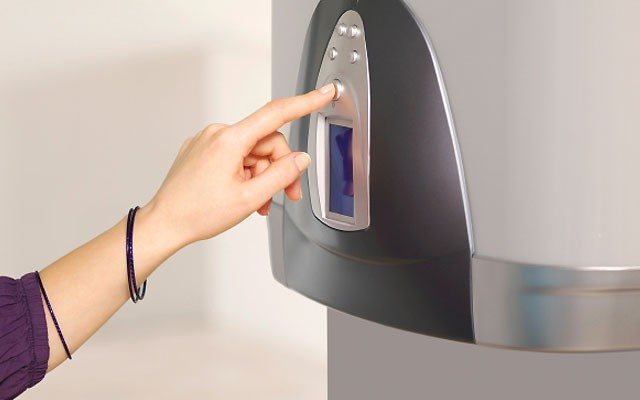

The advantage of this type of heater is that they can be installed in almost any, even the smallest room. Modern models consume little electricity, which saves the family budget. And the most important plus - there will always be a supply of hot water in the house.
Such devices are quite simple to operate, but with irregular use, you can forget how to turn on the boiler correctly. The layout is the same for most models. And subject to a certain sequence of all actions, the water heater will serve its owner for a long time. You can turn it on yourself if you have instructions, or you can contact a specialist for help.
How to remove residual water from the water heater?
As noted above, after draining the water, some of it will still remain inside the tank. And to completely empty the tank, you will need to remove the heating element. To do this, you can follow the algorithm below:
- remove the special casing, having previously disconnected all electrical components;
- once again substitute a basin or any other container designed to collect dirty liquid and debris;
- unscrew the heating element. You may have to make a lot of effort, since in the manufacture of boilers, heating elements are screwed very tightly. Then, after removing the heating element, the water will immediately start flowing into the basin.


Any owner can replace the heating element
Of course, it is better to take into account the possibility of the need to drain the water and make all connections collapsible. And if the water needs to be drained often, then it is advisable to install tees on the supply / drain of the device (tees should be with taps to drain the water).
Video - How to drain water from a water heater, boiler
Note! Due to the fact that the cold water supply pipe still has some height, water will still remain in the tank (out of 100 liters - no more than 10-15), even if it seems that all the liquid has already been drained. This must be taken into account if the boiler is not planned to be used in winter. To get rid of all the water, you need to unscrew the heating element and drain the water through the mounting hole.


For complete cleaning, you need to remove the heating element and drain the water through the mounting hole
Recommendations
Dismantling of the water heater is carried out only after the water is completely drained from the tank. To do this, disconnect the cold water supply hose to the boiler, and put on a pipe in its place, through which the remaining liquid will come out.
During periods when there is no need to operate the boiler, the device is prevented: the heating element is cleaned from scale, the presence of a coating inside the tank with a magnesium anode is determined (protection against corrosion). It is best to do this once a year (on your own or call a specialist) in order to extend the life of the water heater.
When NOT to drain the water
The water from the boiler does not need to be drained if it is out of order during the warranty period. Contact the service center immediately - they should search for the cause and eliminate the malfunction.In most cases, boilers are repaired at home, like any other large equipment.
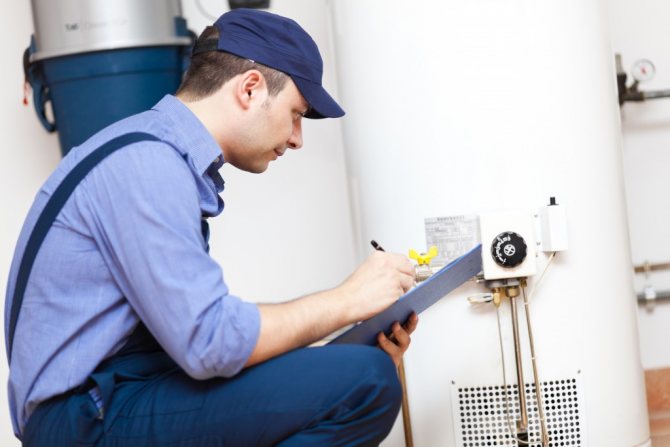

Boiler warranty repair
Why do you need a polyphosphate filter for boilers and boilers
Hard water poses a serious threat to most electrical appliances that interact with water during operation. This applies to the gas water heater, and to the boiler, and to the boiler. Scale can also damage dishwashers and washing machines.
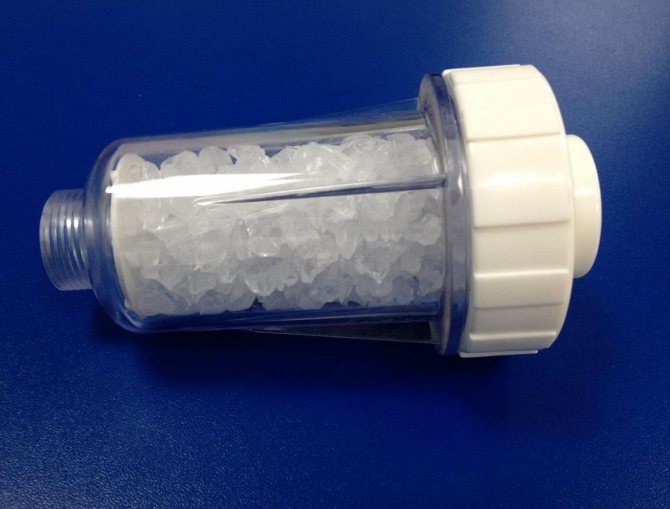

It is recommended to install a polyphosphate filter if the water in the house is hard
It is for these reasons that users who want to keep their equipment in working order for many years try in every possible way to protect it from scale. One of the most effective devices for protecting devices in contact with water is a polyphosphate filter.
The polyphosphate filter is used in devices that require soft purified water. This salt water filtration device is the best protection against scale for boilers and boilers. Polyphosphate filters not only protect appliances from scale and stone deposits, but also significantly increase the effectiveness of detergents.
By the way, polyphosphate filters are used not only to protect the column and boiler. They are used to extend the life of dishwashers and washing machines.
Filters for water purification are used to protect columns and boilers from scale. They are installed in a hose through which water flows, in front of the device that needs protection.
The descaling device will allow you to keep the boiler, boiler or washing machine in working order for longer. At the same time, it will be easier for you to take care of it, because everyone knows how difficult it is to clean a thin tube from a thick layer of scale from the inside. However, if in your area the water hardness exceeds 7 mg-eq / l, then neither a magnetic nor a salt filter will help you.
Varieties of cleaners
In the fight against mechanical contamination of the walls of the water heater, coarse and fine softeners are installed. To combat salt deposits, magnetic cleaners are installed to the inlet pipe that goes to the heating device. This cleaning system is even more effective.
- The deep cleaning boiler filter fights sand, debris and rust particles. They are installed before the meter, at the entrance to the water supply system. It is serviced once every three months.
- A filter for a boiler and a fine water heater is designed to remove salts, chlorine and other impurities from its composition. Moreover, the cleaners that remove impurities from the liquid are single-functional. If, as a result of ion exchange, impurities settle into the sediment, then this is multifunctional. The fine filter can be woven: a darkened fabric winding signals that it is time to change the cartridge. The cartridge is filled with mineral chips, which also darkens from impurities.
- The biological softener is a type of fine cleaning model. It is mounted for supply from a well to a water heater. The process takes place in several stages: removal of chlorine, iron salts, particles of heavy metals, and finally bacteria and viruses, unpleasant odors are removed.
Do I need a filter for a water heater
The quality of tap water directly affects the life of the heater, especially if it is constantly in use. The water must be "soft" and meet the following requirements:
- Transparency.
- Lack of unpleasant odors.
- The minimum content of metal salts, hydrogen sulfide.
- Absence of bacteria.
It is not easy to achieve such indicators. Often, the water contains heavy salts of magnesium and calcium: settling on the elements of the boiler, they reduce thermal conductivity. As a result:
- A large amount of electricity is consumed.
- The water heats up for a long time.
- Content becomes cloudy.
- The heating element burns out.
When hard water is heated, scale is produced - at first a small deposit. If it is not removed at this stage, then the heating element is covered with limestone.
If you are not in the mood to buy a filter or you do not have the opportunity, you need to carry out the following procedures:
- Regular inspection of the internal elements of the tank.
- Cleaning the walls and heating elements.
- Replacing the magnesium anode.
Then you will do it more and more often: not only will you waste your time and effort, but will also spend money on cleaning products. Just imagine, you will need at least once every six months:
- Drain the water tank.
- Dismantle the heating element by disassembling the fasteners.
- Remove the housing cover and clean the walls from plaque, clean the heater.
In this case, there is a risk of damage to one of the parts. Isn't it easier to improve water quality than to endure such consequences?
